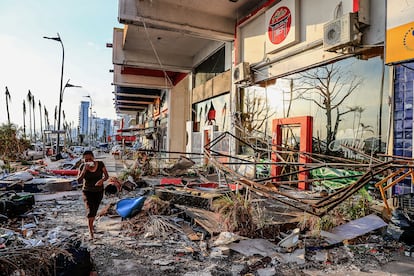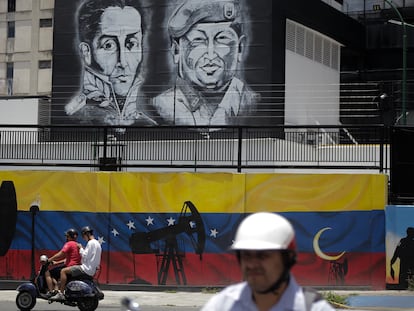What is climate ‘sticker shock’?
The amount of money needed to address climate change is so large that it makes most people want to throw up their hands in defeat. But that’s a very bad idea

The figure is $2.4 trillion. Let’s just put it out there. A two, a four, followed by 11 zeroes. That’s the astronomical figure needed to confront climate change. And not just once. That’s the amount that would have to be spent every year just to avoid the worst impacts to the atmosphere. No one knows for sure how to raise such a sum or who will pay it. But we better figure it out.
There is a lot at stake. In Latin America, for example, the impacts of climate change will go hand in hand with worsening socio-economic conditions. Coastal cities such as Guayaquil in Ecuador or Barranquilla in Colombia are particularly vulnerable to rising sea levels and the fierce punishment of increasingly intense storms. Guayaquil already suffers from flooding that forces thousands of people to abandon their homes. And Barranquilla could lose up to 65% of its urban area.
The Andean region will see the retreat of glaciers, which will reduce water supplies. Bolivia, for example, could lose all its glaciers in the coming decades. The Chaco in Paraguay and Argentina will suffer droughts that will affect agricultural and livestock production. Mexico faces the double impact of more droughts in the north and more floods in the south. Veracruz already suffered one of its worst floods in 2020 with more than 800,000 people affected, and a fierce hurricane recently devastated Acapulco.
Latin America urgently needs more climate financing to protect its citizens. That’s easy to say, but difficult to do. The amounts required are appalling. Americans have a good idiom to describe the dizzying sensation such numbers provoke: “sticker shock.” It was initially coined to describe car buyers’ reactions to seeing prices displayed on car windows. Sticker shock captures what we feel when we discover that there seems to be no feasible way to pay for an essential expense.
The case of the money needed to address global warming illustrates the prickly problem that results when the countries that need to pay the money are not the same as the ones who need to spend it. The necessary funds for mitigating climate shocks must be allocated to southern countries with money originating in northern countries — who must also dedicate funds to fortify their own defenses against the effects of climate change.
Obviously, this is a politically explosive challenge. Until now, the richest countries have had serious difficulties in raising $100 billion to finance the necessary investments in the least developed countries (that’s barely 4% of the amount needed). It is evident that the institutions we have today to cushion the effects of climate change are grossly inadequate.
The U.N. Conference of the Parties (COP) only acts when consensus is achieved. This sounds good, but in practice it is not practical. This unanimous decision-making allows any country, large or small, to veto any initiative. This is a fundamentally inadequate mechanism for the challenge we face. But the consequences of inaction would be too terrible to even begin to contemplate. The borders of developed countries are already creaking under the pressure of climate migrants fleeing unlivable conditions in their own countries. It is an already unmanageable phenomenon, which will only get worse. Today’s migration headaches are a mere preview of what is to come if climate challenges are not met at the scale required. Scientific models for the next 50 years are already predicting the kind of calamities that threaten to leave large swaths of the tropical world effectively uninhabitable.
Millions would die, but millions more would flee their destabilized homelands. The initially absurd figure of $2.4 trillion is now starting to feel very different. Are we really sure it is unattainable? It’s less than half of the $6 trillion dollars the world spends on education each year, and not even a third of the $9 trillion we spend on health services. In fact, it’s roughly on par with the $2.2 trillion the world spent on defense last year. These are all very large numbers to be sure, but they are also the kind of numbers that humanity has already shown it can mobilize to fund its top priorities.
In the coming years, the world will have to come to grips with the fact that climate change mitigation and adaptation are as indispensable as defense, education and healthcare. Once we fully understand that we have no alternative in making these investments, we can overcome the sticker shock and get down to the hard work of raising the financing that humanity needs to adapt to what is coming.
Tu suscripción se está usando en otro dispositivo
¿Quieres añadir otro usuario a tu suscripción?
Si continúas leyendo en este dispositivo, no se podrá leer en el otro.
FlechaTu suscripción se está usando en otro dispositivo y solo puedes acceder a EL PAÍS desde un dispositivo a la vez.
Si quieres compartir tu cuenta, cambia tu suscripción a la modalidad Premium, así podrás añadir otro usuario. Cada uno accederá con su propia cuenta de email, lo que os permitirá personalizar vuestra experiencia en EL PAÍS.
¿Tienes una suscripción de empresa? Accede aquí para contratar más cuentas.
En el caso de no saber quién está usando tu cuenta, te recomendamos cambiar tu contraseña aquí.
Si decides continuar compartiendo tu cuenta, este mensaje se mostrará en tu dispositivo y en el de la otra persona que está usando tu cuenta de forma indefinida, afectando a tu experiencia de lectura. Puedes consultar aquí los términos y condiciones de la suscripción digital.











































